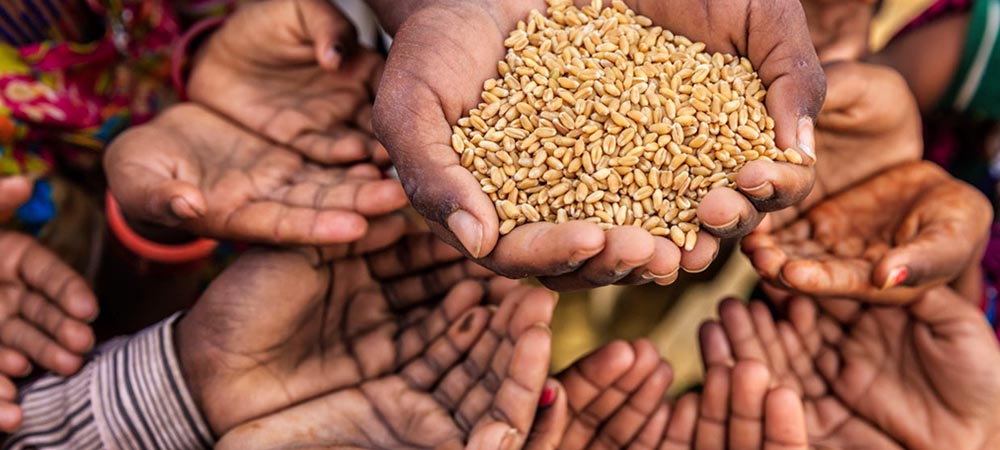advertisement
Can Cloud-Based Technologies Help Address Food Insecurity In Africa?
Food security is arguably one of the biggest concerns to be brought under the spotlight by the COVID-19 pandemic. But…

Food security is arguably one of the biggest concerns to be brought under the spotlight by the COVID-19 pandemic. But the daily challenge people across Africa face in putting food on the table is nothing new.
According to the 2020 Global Report on Food Crisis, there were 135 million people facing acute food insecurity in 55 countries, more than half of them (73 million) in Africa. Further, over 27 million people in six IGAD member states (Ethiopia, Kenya, Somalia, South Sudan, the Sudan and Uganda), were classified in crisis or worse. Here in Kenya, the report estimates that almost 3.1 million people, representing 22 percent of the population analysed in arid and semi-arid lands, were facing crisis conditions or worse from August–October 2019.
While the food insecurity forecasts for 2020 were produced before COVID-19 became a pandemic, it is likely the pandemic may push even more families and communities into deeper distress. In Africa, the combined effects of conflict, macroeconomic crisis, climate related shocks and crop pests, including fall armyworm and desert locusts, are likely to aggravate acute food insecurity in complex and fragile contexts, the report concludes.
advertisement
This calls for a change of tact by all the stakeholders concerned. For us in the technology space, we are noticing some silver lining in application of technology to partly address the challenges above. Already, AI is beginning to transform agriculture in important ways. Many farmers have for instance started utilizing innovative technologies like self-driving tractors that use GPS, satellite imagery, and AI to plant more efficiently. Others are using sensors and machine learning to make decisions like when to irrigate and how much fertilizer to apply.
As an example, Microsoft and partners have developed the AI Sowing App which draws on more than 30 years of climate data, combined with real-time weather information, and then using sophisticated forecasting models to determine the optimal time to plant, the ideal sowing depth, how much farm manure to apply, and more. That information is then shared with farmers through text messages that they receive on a basic feature phone.
In the pilot’s first year, 175 groundnut farmers participated in Andhra Pradesh on the southeast coast of India. Most farmers in the region planted in early June, as dictated by custom and tradition. Farmers who used the AI Sowing App delayed planting by three weeks. For those who waited, the results were dramatic—on average they harvested 30 percent more per hectare than farmers who planted at the beginning of June. In the second year, the program was expanded to more than 3,000 farmers and covered a much wider range of crops, including maize, rice, and cotton. Average increases ranged from 10 percent to 30 percent, depending on the crop and the location.
advertisement
In yet another example through a platform called Project FarmBeats, farmers are exploring a new approach to agriculture that uses sensors to measure soil moisture and temperature along with drones to gather aerial imagery, and then feeding all that data into cloud-based AI models that provide a precise, up-to-the-minute picture of the conditions on their farms, down to the square meter.
With this level of precise knowledge, farmers are able to make clear decisions about when to plant, when to water, how much fertilizer to apply, when to harvest, and more for each small section of their farms. This approach can be used to save labor, reduce costs, and improve output. And it is pointing the way toward a future where farms of all sizes can produce more food, operate sustainably, and generate greater profits.
Closer home, organisations like Twiga Foods are proving that technology has an important role to play in helping solve the twin challenge of food insecurity and accessibility. By employing latest technologies, we are focused on creating solutions to help farmers get their produce to the market, and to get produce to vendors at low cost, ultimately making food less expensive for the population.
advertisement
Since launching locally in 2014, we have focused on building Kenya’s only end-to-end food distribution system, sourcing produce from more than 17,000 farmers and forwarding it onto a robust network of more than 8,000 vendors. At the heart of the company’s offering is a unique digital platform and logistics network—an innovative alternative to existing factory-to-market processes, which can be both costly and inefficient for Kenya’s independent food industry operators.
The organization’s vision has always encompassed becoming Africa’s largest e-grocer, bridging the gaps in African urban food markets through an organized platform for an efficient, fair, transparent, and formal marketplace. This will be achieved through use of various tech platforms with our biggest driver being mobile commerce as we work toward bridging the gap between farm to fork.
Utilizing a mobile, cashless platform used to aggregate urban retail demand, we are offering thousands of vendors convenient one-stop shop ordering. Through this innovative platform, we can pay farmers within 24 hours of collection through their mobile wallets, providing increased income visibility and facilitating better financial planning.
We intend to continue making use of disruptive technologies such as AI, IoT, and Blockchain to automate our processes. This is the new normal and what will help Africa shift the gloomy statistics recorded by the Global Report on Food Crisis.
Francis Mwangi is Information Security and IT services manager at Twiga Foods